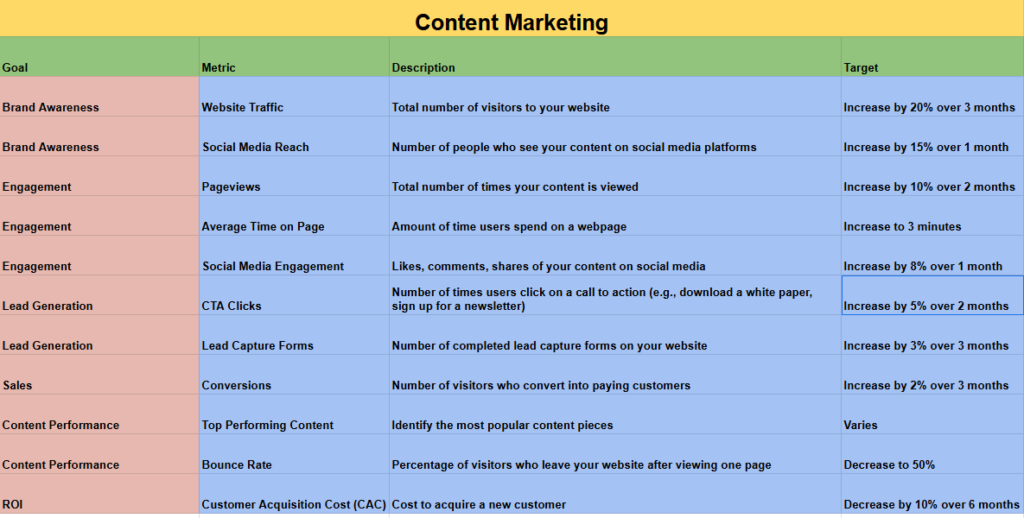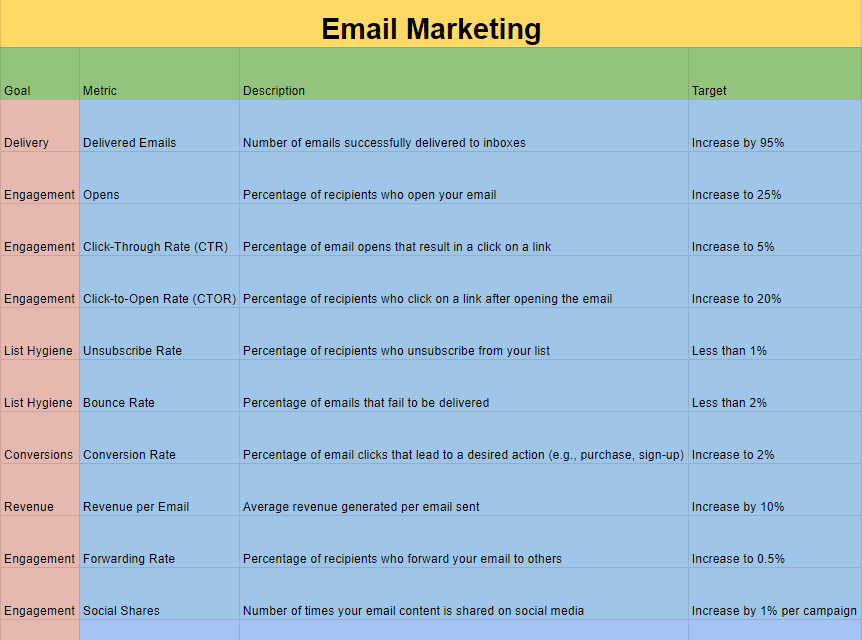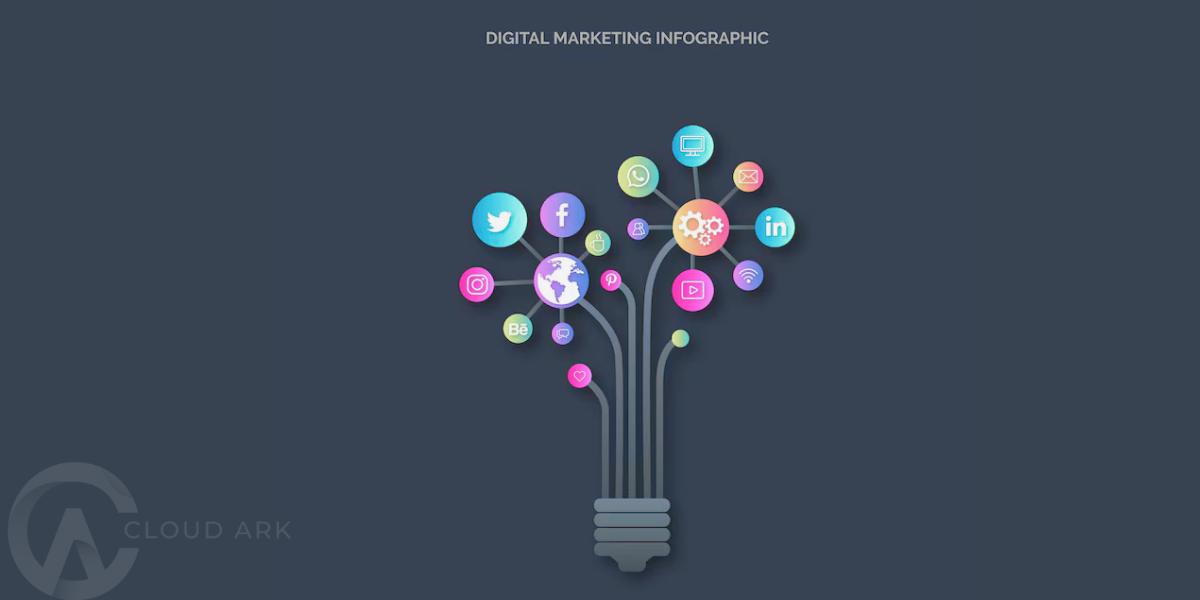The way businesses reach and engage with their customers has evolved dramatically. Traditional marketing methods are being supplemented, and in many cases, replaced by digital marketing strategies. This shift is not just a trend; it’s a fundamental change in how businesses operate and succeed. Digital marketing offers a range of tools and techniques that can significantly transform your business, providing a competitive edge in an increasingly connected world.
Understanding Digital Marketing
Let’s break down digital marketing into its key tools, without the fluff.
- SEO:
Think of SEO as the secret weapon for your website. It optimizes your content and structure to rank higher on search engines like Google. The higher you rank, the more likely people are to find you naturally, driving free traffic to your site. - Content Marketing: Attract and Engage with Valuable Content
This isn’t just about fluffy blog posts. Content marketing is about creating informative, engaging content that resonates with your target audience. Think blog posts, infographics, videos, anything that educates and keeps them coming back for more. - Social Media Marketing: Connect and Convert on Social Platforms
Social media isn’t just for cat videos anymore (although, those can be pretty strategic too). It’s a powerful tool to connect with your audience, promote your content, and build brand awareness. From Facebook to LinkedIn, the right platform can be a goldmine for leads. - PPC Advertising: Get Seen Fast (For a Price)
Want to skip the SEO queue and appear at the top of search results instantly? PPC, like Google Ads, lets you do just that. You pay a fee each time someone clicks your ad, driving targeted traffic straight to your website. - Email Marketing: Targeted Communication, Big Results
Email isn’t dead! It’s a fantastic way to nurture leads, promote products and services, and stay connected with your audience. Build an email list and craft targeted campaigns that convert. - Affiliate Marketing: Earn by Partnering with Others
Don’t have your own products? No problem! Affiliate marketing lets you promote other companies’ products on your website and earn a commission for every sale you generate. It’s a win-win for everyone. - Influencer Marketing: Leverage Trusted Voices
Influencers have built a loyal following online. Partnering with them allows you to tap into their audience and promote your brand authentically. Just make sure the influencer aligns with your target market.
Business Transformation Through Digital Marketing
Unleashing Global Reach and Unprecedented Visibility
Unlike traditional marketing methods confined by regional limitations, digital marketing knows no borders. Through a strategic online presence, you can showcase your brand to a worldwide audience, fostering brand awareness and igniting growth opportunities.
- SEO (Search Engine Optimization): The cornerstone of digital visibility, SEO optimizes your website to rank higher in search engine results pages (SERPs) like Google. The higher you rank for relevant keywords, the more likely potential customers are to discover your brand organically.
- Content Marketing: Consistently publishing informative and engaging content (think blog posts, infographics, videos) positions you as a thought leader in your industry. This valuable content attracts a global audience searching for solutions, establishing your brand as a trusted resource.
- Social Media Marketing: Social media platforms like Facebook, Twitter, and LinkedIn transcend borders, allowing you to connect with a diverse audience. By sharing engaging content, running targeted ads, and fostering conversations, you can build a global community around your brand.
Cost-Effectiveness:
Gone are the days of exorbitant marketing budgets. Digital marketing offers a cost-effective approach to reach a vast audience. Here’s how it breaks down:
- Lower Entry Barrier: Compared to traditional advertising avenues like television or print, launching a digital marketing campaign requires a significantly smaller investment. This makes it an attractive option for startups and small businesses.
- Targeted Advertising: Digital marketing allows for laser-focused advertising efforts. Platforms like Google Ads and Facebook Ads empower you to target specific demographics, interests, and locations. This ensures your marketing budget reaches the most relevant audience, maximizing your return on investment (ROI).
- Measurable Results: Unlike traditional marketing, where ROI can be difficult to quantify, digital marketing provides clear data on campaign performance. This allows you to optimize strategies, identify cost-saving opportunities, and allocate resources efficiently.
Measurable Results:
Digital marketing thrives on actionable data. Unlike traditional marketing campaigns where effectiveness can be shrouded in uncertainty, digital marketing offers a wealth of insights to measure success. Here’s how:
- Website Analytics: Tools like Google Analytics provide a treasure trove of data on website traffic, user behavior, and conversion rates. By analyzing this data, you can understand how visitors interact with your website, identify areas for improvement, and refine your marketing strategy for optimal results.
- Social Media Insights: Social media platforms offer built-in analytics that track reach, engagement, and follower demographics. This allows you to gauge the effectiveness of your social media campaigns, understand what resonates with your audience, and tailor your content accordingly.
- Email Marketing Metrics: Email marketing platforms track vital metrics like open rates, click-through rates, and conversion rates. These insights enable you to measure the effectiveness of your email campaigns, personalize content based on audience behavior, and optimize your email strategy for maximum impact.
Tailored Communication:
Digital marketing isn’t a one-size-fits-all approach. It allows for highly targeted communication, ensuring your message reaches the most receptive audience. Here’s how:
- Audience Targeting: Platforms like Google Ads and Facebook Ads empower you to target specific demographics, interests, and online behavior. This laser focus ensures your message reaches the most relevant audience, increasing the likelihood of conversion.
- Personalized Content: By analyzing user data and behavior, you can create your content to resonate with specific audience segments. This personalization fosters deeper engagement and cultivates stronger brand connections.
- Segmentation: Building email marketing lists segmented by demographics or interests allows you to craft targeted email campaigns that speak directly to specific audience needs. This results in higher open rates, click-through rates, and ultimately, conversions.
Through targeted communication, you can create a more meaningful connection with your audience. This fosters brand loyalty, builds trust, and ultimately drives sales.
Two-Way Communication:
Digital marketing isn’t a one-way street. It facilitates a dynamic dialogue between brands and customers, fostering stronger relationships. Here’s how:
- Social Media Engagement: Social media platforms provide a space for real-time interaction with your audience. Respond to comments and messages promptly, address concerns openly, and participate in conversations. This interactive approach builds trust and loyalty.
- Email Marketing: Personalized email campaigns nurture customer relationships. Respond to inquiries promptly, provide valuable content, and offer exclusive promotions. This ongoing communication strengthens customer connections.
- Customer Reviews and Feedback: Encourage customer reviews on platforms like Google My Business and social media. Actively seek feedback through surveys and polls. By listening to your customers and addressing their needs, you demonstrate that you care, fostering brand loyalty.

Key Digital Marketing Strategies
- SEO:
What it is:
SEO is the art and science of optimizing your website to rank higher in search engine results pages (SERPs) for relevant keywords. This increases the organic visibility of your website, attracting potential customers who are actively searching for products or services related to your offerings.
- Key Techniques:
- Keyword Research: Identify relevant keywords with high search volume and low competition to target in your content.
- On-Page Optimization: Optimize website elements like title tags, meta descriptions, header tags, content, and image alt text with targeted keywords.
- Content Creation: Publish high-quality, informative content that addresses user search intent and incorporates targeted keywords naturally.
- Technical SEO: Ensure your website has a clean code structure, fast loading speed, and is mobile-friendly.
- Backlink Building: Earn high-quality backlinks from reputable websites to demonstrate your website’s authority and trustworthiness.
- Key Techniques:
- Benefits:
- Increased organic traffic
- Improved brand awareness
- Cost-effective lead generation
- Higher conversion rates
- Builds trust and credibility
- Challenges:
- SEO is an ongoing process requiring consistent effort and adaptation to algorithm changes.
- Competition for high-ranking keywords can be fierce.
- Building high-quality backlinks takes time and strategic outreach.

Content Marketing:
- What it is:
Content marketing involves creating and distributing valuable, informative, and engaging content that attracts your target audience and establishes your brand as an industry authority. - Content Formats:
- Blog posts
- Infographics
- E-books
- White papers
- Videos
- Podcasts
- Webinars
- Case studies
- Social media content (text, images, and videos)
- Benefits:
- Improves SEO by providing valuable content for search engines to crawl and index.
- Educates and informs your target audience, building trust and credibility.
- Positions your brand as a thought leader in your industry.
- Nurtures leads and drives conversions through calls to action (CTAs)
- Enhances brand awareness and recall.
- Challenges:
- Creating high-quality content consistently requires time and resources.
- Standing out in a sea of content can be difficult.
- Measuring the ROI of content marketing can be complex.

Social Media Marketing:
- What it is:
Social media marketing leverages social media platforms to connect with your target audience, build brand awareness, promote your products or services, and foster a community around your brand. - Key Platforms:
- YouTube
- TikTok (depending on your target audience)
- Strategies:
- Create engaging content relevant to your target audience’s interests.
- Run targeted social media ads to reach a wider audience.
- Interact with your followers by responding to comments and messages.
- Collaborate with relevant influencers to expand your reach.
- Use social media analytics to track your performance and optimize your strategy.
- Benefits:
- Increased brand awareness
- Improved brand sentiment and reputation
- Strong customer engagement and community building
- Cost-effective marketing opportunities
- Drives traffic to your website
- Challenges:
- Keeping up with the ever-evolving landscape of social media trends and algorithms.
- Creating engaging content consistently across multiple platforms.
- Managing negative comments and online reputation.
Email Marketing:
- What it is:
Email marketing is a powerful tool for nurturing leads, promoting products or services, and driving conversions by sending targeted emails to a permission-based subscriber list. - Strategies:
- Build an email list by offering valuable incentives for signup, like e-books or discounts.
- Segment your email list based on demographics, interests, and purchase behavior for targeted campaigns.
- Personalize your emails to resonate with individual subscribers.
- Create compelling email content with clear CTAs.
- Analyze your email marketing performance and optimize your campaigns over time.
- Benefits:
- Highly targeted marketing with a strong ROI
- Drives sales and conversions
- Fosters customer loyalty and repeat business
- Excellent platform for nurturing leads through email drip campaigns.
- Challenges:
- Building a permission-based email list requires offering value and respecting user privacy.
- Maintaining good email deliverability by avoiding spammy practices and ensuring proper list hygiene (removing inactive subscribers).
- Keeping your emails engaging and avoiding subscriber fatigue by sending emails at optimal frequencies and offering valuable content.

Pay-Per-Click (PPC) Advertising:
- What it is:
PPC advertising allows you to display targeted ads on search engines (like Google Ads and Bing Ads) and other platforms (like social media). You only pay when someone clicks your ad, driving immediate traffic to your website and generating leads. - Campaign Types:
- Search Network Ads: Appear on search engine results pages (SERPs) when users search for relevant keywords.
- Display Network Ads: Appear on websites across the web that are part of a display advertising network.
- Shopping Ads: Showcase product listings with images and prices on search engines and partner websites.
- Social Media Ads: Targeted ads displayed on social media platforms like Facebook, Twitter, and Instagram.
- Benefits:
- Drives immediate traffic to your website
- Generates leads quickly
- Highly targeted advertising reaching your ideal audience
- Measurable results with clear ROI tracking
- Complements your SEO efforts
- Challenges:
- Can be expensive depending on your industry and keywords.
- Requires ongoing campaign optimization and management.
- Competition for ad space can be fierce, driving up costs.
Affiliate Marketing:
- What it is:
Affiliate marketing involves partnering with other businesses or influencers (affiliates) to promote your products or services in exchange for a commission on sales generated through their unique affiliate links or codes. - Benefits:
- Expands your reach to new audiences through trusted recommendations.
- Cost-effective marketing strategy as you only pay for results (sales).
- Leverages the credibility and audience of established affiliates.
- Drives additional traffic and sales to your website.
- Challenges:
- Finding and managing reliable affiliates requires effort and due diligence.
- Ensuring proper tracking and attribution of sales generated through affiliates.
- Maintaining good relationships and offering competitive commission structures to affiliates.
Influencer Marketing:
- What it is:
Influencer marketing involves collaborating with social media personalities or industry experts (influencers) who have a large and engaged following to promote your brand or products. - Types of Influencer Partnerships:
- Sponsored Posts: Influencers create content (posts, stories, videos) featuring your brand or products.
- Brand Ambassadors: Long-term partnerships where influencers represent your brand across various platforms.
- Giveaways and Contests: Partner with influencers to run contests or giveaways featuring your products.
- Benefits:
- Leverages the influencer’s credibility and reach to tap into new audiences.
- Increases brand awareness and product visibility.
- Drives engagement and trust through authentic influencer recommendations.
- Can generate significant sales and conversions.
- Challenges:
- Finding the right influencers who align with your brand values and target audience.
- Ensuring authenticity and transparency in influencer partnerships.
- Measuring the true impact and ROI of influencer marketing campaigns.

The Future of Digital Marketing
As technology continues to evolve, digital marketing will become even more integral to business success. Emerging trends such as artificial intelligence (AI), machine learning, and voice search are set to transform how businesses reach and engage with their customers. Staying ahead of these trends and adapting your digital marketing strategies accordingly will be crucial for sustained growth and competitiveness.
Voice Search Optimization
With the rise of smart speakers and voice assistants, optimizing for voice search is becoming increasingly important. Voice search queries are often longer and more conversational, requiring businesses to adjust their SEO strategies to capture this growing segment of search traffic.
Video Marketing
Video continues to be a dominant form of content in digital marketing. Platforms like YouTube, TikTok, and Instagram offer opportunities for businesses to engage with their audience through compelling video content. Live streaming and interactive videos are also gaining popularity, providing real-time engagement and a more immersive customer experience.
Personalization
Personalization remains a key trend in digital marketing. By leveraging data and technology, businesses can deliver highly tailored content and experiences to their customers. Personalized recommendations, dynamic content, and targeted advertising can significantly enhance customer satisfaction and drive conversions.
Conclusion
Digital marketing isn’t optional anymore. It’s essential to grow your business. CloudArk helps by providing the secure cloud storage and tools you need to manage your digital marketing content and data effectively. This lets you focus on creating strong online presence and engaging your audience. Embrace the future of business, embrace digital marketing with CloudArk.

